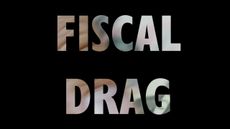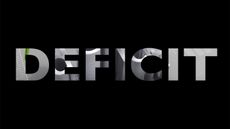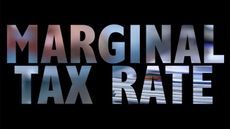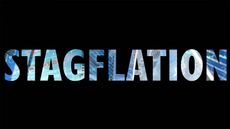What is a dividend yield?
Learn what a dividend yield is and what it can tell investors about a company's plans to return profits to its investors.


A dividend yield tells us what percentage of a company’s current share price is paid out in dividends each year.
A company usually pays a dividend as a way of returning excess profits to investors. It can also be described as a reward or thank you to shareholders for taking on the risk of investing in the stock in the first place.
What is a dividend?
The main aim of any business is to make a profit, otherwise, it’s not a productive use of capital.
Subscribe to MoneyWeek
Subscribe to MoneyWeek today and get your first six magazine issues absolutely FREE

Sign up to Money Morning
Don't miss the latest investment and personal finances news, market analysis, plus money-saving tips with our free twice-daily newsletter
Don't miss the latest investment and personal finances news, market analysis, plus money-saving tips with our free twice-daily newsletter
Profits are used to pay staff, invest in growth, strengthen the balance sheet for a rainy day and reward the investors who backed the business in the first place.
A company might choose to reward its investors with a dividend, assuming it’s generating enough cash to cover all its other operating expenses and spending obligations.
Each year a business’ managers, or in the case of a public company, its directors, will sit down to decide whether they should pay a dividend, and if so, how much they should return to shareholders and how much they should hold back in the business.
For example, if profits (after tax) are £100,000 and £50,000 is paid out as a cash dividend, then only £50,000 can be kept back by the directors for growth. That's why (traditionally at least) some firms grow fast, but pay low dividends (technology firms are typical) while others offer high dividends but lower growth prospects (utilities often fit this description).
What is a dividend yield?
The return from dividends on any given stock or share index is measured by the dividend yield. This is the latest annual dividend, divided by the current share price as a percentage.
For example, if a company paid a single dividend of 10p per share this year and its shares are trading at a price of 1,000p, the dividend yield would be 10p ÷ 1,000p = 0.01 (which is 1%).
If the firm paid a dividend of 5p after half a year (usually called an interim dividend) and a further 10p at the end of the financial year (a final dividend), you would add the two together and get (5p + 10p) ÷ 1,000p = 0.015 (1.5%).
Companies don’t have to pay dividends
It’s important to understand that companies don't have to pay dividends. After all, dividends are a return of profit. If a business isn’t making any money, it shouldn’t be giving money back to its shareholders.
Some public companies try to pay what’s known as a “progressive dividend.” This means they try to keep the dividend growing year after year. These are usually defensive businesses, such as utility companies, which have predictable revenue streams.
However, other equities might choose to pay a smaller regular dividend, and then present shareholders with large, one-off special dividends when profits are better than expected. This is quite common in the resource sector, where commodity prices (and as a result, profits) can be very volatile.
There are lots of factors that determine whether or not a company will pay a dividend to its shareholders. And just because they paid one this year, doesn't mean they have to do it next year.
How to calculate a historic dividend yield
To get a more complete picture of a firm’s dividend the dividend yield can be calculated based on what the firm paid in the past 12 months or calendar year (sometimes referred to as the trailing or historical dividend yield) or on the amount that it’s expected to pay over the next 12 months (a forecast or forward dividend yield).
Trailing yields reflect what has actually been paid – but past dividends may not be sustainable.
Forecast yields reflect any changes that analysts expect – but forecasts are unreliable. Investors should look at both, but should not rely solely on either to make their decision: you need to think about the long-term prospects for a firm’s dividends, including any signals that the market is sending.
Dividend red flags
A good way to determine whether or not a company can maintain its dividend is to look for some common red flags. These may indicate an imminent dividend cut.
For example, a firm with a very high yield may look cheap, but this could indicate no one believes it will actually be paid. This is a common red flag.
Another red flag is high debt levels. If a company has a lot of debt, these obligations will fall due at some point. From a business point of view, paying off creditors must be done before and return of profits to shareholders is considered.
It's important to safety-check the dividend, to test just how sustainable it is – especially if the dividend yield looks particularly large compared to the rest of the sector.
Using dividend cover to check the dividend yield
There are several ways to sense-check dividend yield sustainability.
One way is to look at “dividend cover” or “payout ratios”.
Dividend cover measures the number of times profits cover the payout. The earnings per share (EPS) figure is usually used in this calculation.
EPS measures total net profits divided by the total number of shares outstanding for a public company. If the business reports EPS of 20p and pays a dividend of 10p per share, its cover is two. That’s a healthy level.
While cover usually differs across sectors, theoretically the higher the figure, the more secure the dividend.
A dividend that is well covered typically signals that a company has sufficient capital to pay out dividends. But this does not necessarily mean the company can actually afford to pay the dividend, let alone actually will.
Rupert was the former Deputy Digital Editor of MoneyWeek. He's an active investor and has always been fascinated by the world of business and investing.
His style has been heavily influenced by US investors Warren Buffett and Philip Carret. He is always looking for high-quality growth opportunities trading at a reasonable price, preferring cash generative businesses with strong balance sheets over blue-sky growth stocks.
Rupert has freelanced as a financial journalist for 10 years, writing for several UK and international publications aimed at a range of readers, from the first timer to experienced high net wealth individuals and fund managers. During this time he had developed a deep understanding of the financial markets and the factors that influence them.
He has written for the Motley Fool, Gurufocus and ValueWalk among others. Rupert has also founded and managed several businesses, including New York-based hedge fund newsletter, Hidden Value Stocks, written over 20 ebooks and appeared as an expert commentator on the BBC World Service.
He has achieved the CFA UK Certificate in Investment Management, Chartered Institute for Securities & Investment Investment Advice Diploma and Chartered Institute for Securities & Investment Private Client Investment Advice & Management (PCIAM) qualification.
-
 Stop inheritance tax perk on pensions, says IFS
Stop inheritance tax perk on pensions, says IFSThe government could raise billions of pounds in revenue by closing inheritance tax loopholes, such as on pensions and AIM shares. Is your pension at risk?
By Ruth Emery Published
-
 Revealed: Best buy-to-let property hotspots in the UK
Revealed: Best buy-to-let property hotspots in the UKLooking for the best buy-to-let property locations in the UK? We reveal the top 10 postcodes with the strongest rental returns
By Oojal Dhanjal Published
-
What is an investment trust?
Videos “Active” investment funds come in two main varieties, one of which is investment trusts. But what exactly is an investment trust?
By Rupert Hargreaves Last updated
-
 High earners to pay nearly £2000 more in tax due to fiscal drag
High earners to pay nearly £2000 more in tax due to fiscal dragVideos The government froze tax thresholds, which will drag employees into higher tax bands as wages rise with inflation. We explain what fiscal drag is, and how to avoid it.
By Nicole García Mérida Last updated
-
 What is a deficit?
What is a deficit?Videos When we talk about government spending and the public finances, we often hear the word ‘deficit’ being used. But what is a deficit, and why does it matter?
By moneyweek Published
-
 Too embarrassed to ask: what is moral hazard?
Too embarrassed to ask: what is moral hazard?Videos The term “moral hazard” comes from the insurance industry in the 18th century. But what does it mean today?
By moneyweek Published
-
 Too embarrassed to ask: what is contagion?
Too embarrassed to ask: what is contagion?Videos Most of us probably know what “contagion” is in a biological sense. But it also crops up in financial markets. Here's what it means.
By moneyweek Published
-
 Too embarrassed to ask: what is a marginal tax rate?
Too embarrassed to ask: what is a marginal tax rate?Videos Your marginal tax rate is simply the tax rate you pay on each extra pound of income you earn. Here's how that works.
By moneyweek Published
-
 Too embarrassed to ask: what is stagflation?
Too embarrassed to ask: what is stagflation?Videos Traditionally, economists and central bankers worry about inflation or recession. But there is one thing worse than both: stagflation. Here's what it is
By moneyweek Published
-
 What is pension drawdown?
What is pension drawdown?Videos Pension drawdown is a way of taking cash out of your pension pot and funding your lifestyle in retirement. But how does it work and is it the best option for you?
By Tom Higgins Last updated